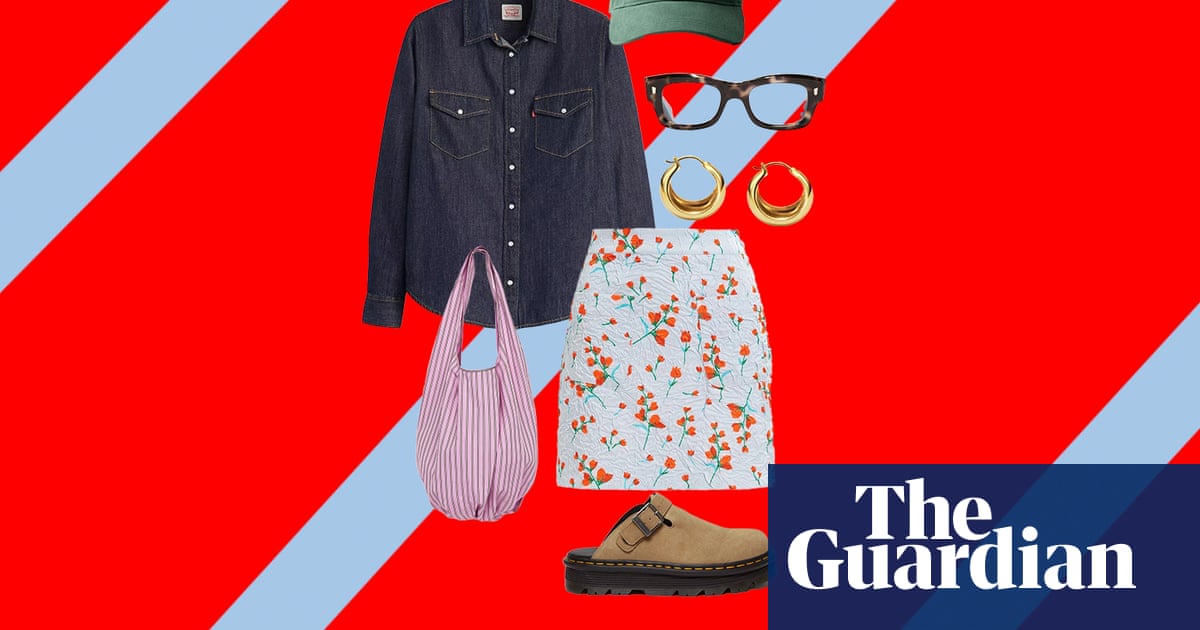The Australian Open, much like the cast of characters who step on to the sunshine-soaked courts every January, has its own sense of style. Over the decades, it has evolved to have more in common with the neon glamour of the US Open than the buttoned-up all-white tradition of Wimbledon, but energetically it lands somewhere in between.
Our laid-back footwear-is-optional lifestyle and the heat of high summer have long created an environment for the best players in the world to embrace colour (Serena Williams has always understood it looks better on TV), midriffs (in the manner of Anna Kournikova) and baggy, untucked T-shirts (in the days of the Sampras-Agassi rivalry).
Tennis endures as the major sporting arena that gives players a platform for highly stylised self-expression – so long as it remains within the International Tennis Federation’s rules: clean and customarily accepted tennis attire.
Streetwear on court in the 90s
Composite: Getty Images/AFP
The too-big silhouettes of this era could not look any more comfortable. On the way to the first of his four Australian Open victories, Andre Agassi defeated boy next door Pat Rafter in the fourth round of the 1995 tournament. At the time, Agassi’s style was his signature – colour-coordinated bandanas, shorts and T-shirts that bordered on streetwear.
In hindsight, Rafter does kind of match him. His oversized, orange-red-sage-navy striped polo shirt looks like something you’d happily pick up from the rack of a vintage store now.
Pete Sampras’s coordinated shorts and T-shirt the following year are similarly nonchalant and chic. “You might see people dressed in these sorts of clothes on the street today,” says Harriette Richards, a lecturer in fashion at RMIT University. “But there is no way you would see a professional athlete dressed this way on the court.”
Adidas stripes take over
Although Kournikova wore a black Adidas twinset in 1998, every detail from her necklaces to her bare midriff could have been lifted off the Bondi-to-Bronte coastal walk today. Despite never winning a singles tournament, Kournikova’s blond model looks earned her lucrative sponsorship deals that moved the barometer for professional athletes’ relationships with brands.
Similarly, Martina Hingis’s white Adidas ensemble from 2002, when she was on her way to her sixth consecutive Australian Open final (she won three of those) reveals two things: one is “a shift from loose, cotton clothing to more fitted stretch polyester garments and a focus on physique”, says Richards. The other is the beginning of a time when sporting brands wanted their logos to be visible and their association with sporting prowess to be obvious.
From day to night to tennis
In the 2000s, three fashion forces rolled on to the court and dramatically changed the appearance, energy and money of women’s tennis. Their names were Venus Williams, Serena Williams and Maria Sharapova. Between them they hold 12 Australian Open titles and off the court they have each launched successful clothing lines and brand collaborations. Two of the three emphasised their ties to the fashion industry by announcing their retirements in fashion magazines: Sharapova did so in an essay for Vanity Fair in 2020, Serena wrote a similar one for Vogue in 2022.
They took tennis from preppy and minimal to flashy and fun. Each dress, bodysuit or crop top was more intricately constructed than the last: asymmetric straps, mesh panels, pleated skirts, shiny embellishments and lightweight layers over skin-tight underlays.
“Skirts that float, dresses that flatter, cuts that speak the language of refinement,” says LoveWant magazine editor-in-chief Bart Celestino of Sharapova’s style. In contrast, the Williams sisters transformed tennis attire from something passive to something active: “Each outfit a challenge, a rebellion against the polite, pristine world that tennis used to be.”
after newsletter promotion
From Nike to Uniqlo
On the way to his sixth Australian Open title and final grand slam victory in Melbourne in 2018, Roger Federer wore white shorts with a white, black and pink striped T-shirt that was coordinated to match his pink sneakers and black sweatbands. The outfit is the type of elegant ensemble Federer was known to love, but it marked the last time he would wear Nike – his sponsor for two decades – at a major tournament.
He went on to sign a 10-year $300m endorsement deal with the Japanese brand Uniqlo a few months later. The deal made Federer the highest-paid athlete in the world from off-court revenue. “It was the first time a tennis player had signed a sponsorship deal with a non-sports brand,” says Richards. “Federer is such a fashion darling, so this was a really groundbreaking move in the history of sportswear partnerships.”
Basketball singlets or nothing
Outspoken but undeniable crowd favourite Nick Kyrgios was playing in his third Australian Open singles tournament in 2016, aged 20, when he took to the court in a basketball singlet. Along with a distractingly pretty diamond necklace, a blistering serve and the lament of squandered talent, the look would go on to become one of his signatures. He wore it when he won the Australian Open doubles trophy with Thanasi Kokkinakis in 2022.
But in June 2015, he infamously declared he’d rather be playing basketball than tennis. “But clearly what he meant was, if he couldn’t play his preferred sport, he’d just wear basketball jerseys on the tennis court,” says culture critic and a longtime Australian Open observer Osman Faruqi. “His more casual streetwear approach has been a good and necessary influence on a sport that desperately needs to ditch the tea and cucumber set and embrace a younger, more diverse generation.”
Changemaker
When Serena Williams walked on court for her last Australian Open appearance in 2021, she had already won it seven times and given the crowd countless unforgettable fashion moments. Despite not securing another trophy, she would leave them with one more memory: a long-sleeved, one-legged, hot pink, red and black colour-blocked jumpsuit.
Three years before, the reaction to her full-body black catsuit at the French Open had been so volatile it inspired a change to the dress code. In Melbourne, her wild and wonderful wardrobe was thankfully almost always met with the unpretentious abandon available to a city that is not one of the big four fashion capitals (despite what it may want to believe).
“Serena’s approach to on-court fashion is for me, hands down, peerless,” says Faruqi. “Not content with being the GOAT, Serena redefined what a tennis outfit could be multiple times throughout her career, often facing hostile criticism for doing so.”
Whether it was the jade-green jumpsuit she wore in 2019, also known as a “Serena-tard”, or her embrace of the brightest colours (canary yellow anyone?), throughout her career she embodied truly powerful body positivity and a playful femininity that has paved the way for generations of players to come.










